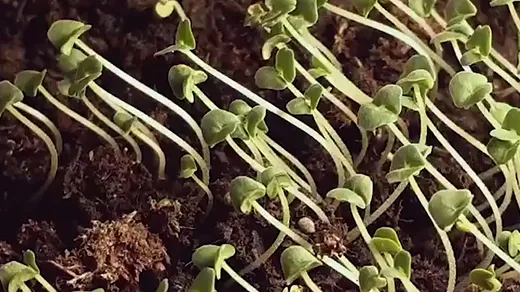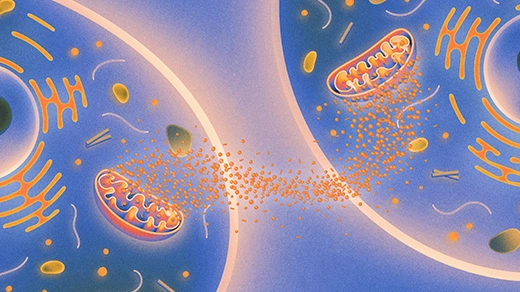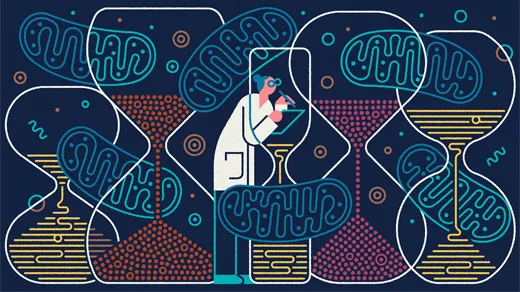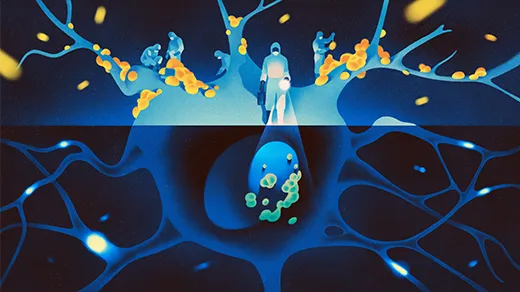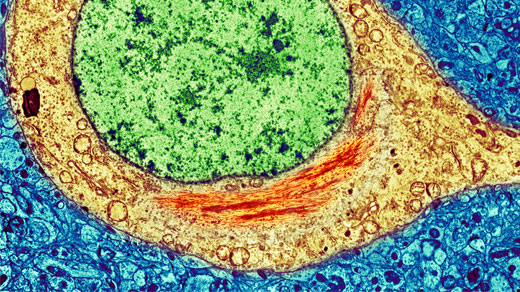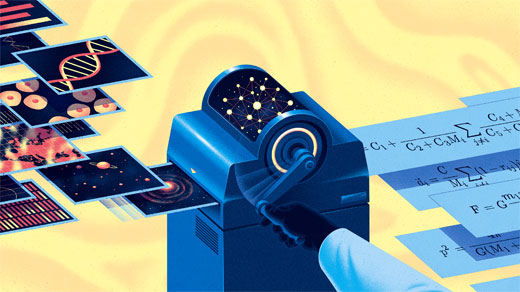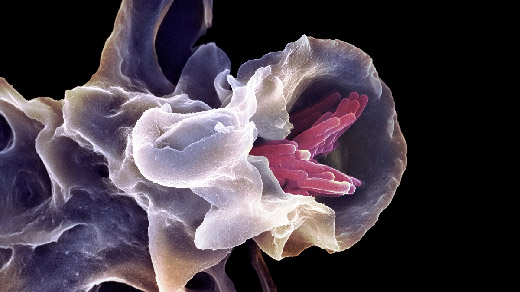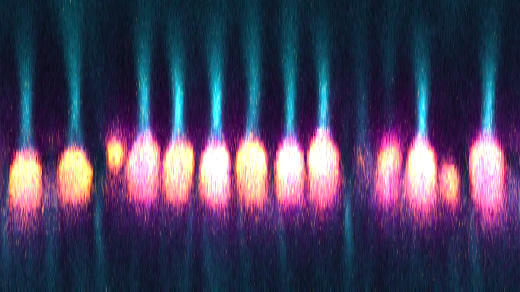What's up in
Cell biology
Latest Articles
Cellular Self-Destruction May Be Ancient. But Why?
How did cells evolve a process to end their own lives? Recent research suggests that apoptosis, a form of programmed cell death, first arose billions of years ago in bacteria with a primitive sociality.
Plants Find Light Using Gaps Between Their Cells
A mutant seedling revealed how plant tissues scatter incoming light, allowing plants to sense its direction and move toward it.
Cells Across the Body Talk to Each Other About Aging
Biologists discovered that mitochondria in different tissues talk to each other to repair injured cells. When their signal fails, the biological clock starts winding down.
What Makes Life Tick? Mitochondria May Keep Time for Cells
Every species develops at its own unique tempo, leaving scientists to wonder what governs their timing. A suite of new findings suggests that cells use basic metabolic processes as clocks.
What Causes Alzheimer’s? Scientists Are Rethinking the Answer.
After decades in the shadow of the reigning model for Alzheimer’s disease, alternative explanations are finally getting the attention they deserve.
Protein Blobs Linked to Alzheimer’s Affect Aging in All Cells
Protein buildups like those seen around neurons in Alzheimer’s, Parkinson’s and other brain diseases occur in all aging cells, a new study suggests. Learning their significance may reveal new strategies for treating age-related diseases.
Powerful ‘Machine Scientists’ Distill the Laws of Physics From Raw Data
Researchers say we’re on the cusp of “GoPro physics,” where a camera can point at an event and an algorithm can identify the underlying physics equation.
Ancient Genes for Symbiosis Hint at Mitochondria’s Origins
Was the addition of mitochondria a first step in the formation of complex cells or one of the last? A new study of bacteria tries to answer this contentious question in evolutionary biology.
Mitochondria Double as Tiny Lenses in the Eye
The optical properties of mitochondrial bundles in the retina may improve how efficiently the eye captures light.

